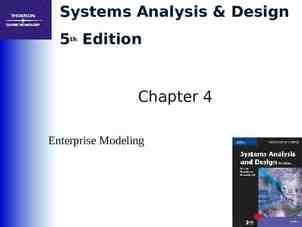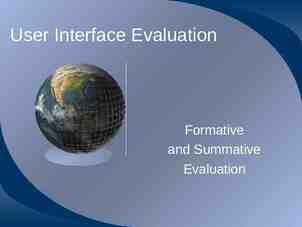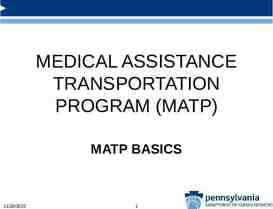Human Resource Management Thirteenth Edition GARRY DESSLER Part
31 Slides1.09 MB

Human Resource Management Thirteenth Edition GARRY DESSLER Part 4 Compensation Chapter 12 Pay for Performance and Financial Incentives

After studying this chapter, you should be able to: 1. Discuss the main incentives for individual employees. 2. Discuss the pros and cons of incentives for salespeople. 3. Name and define the most popular organizationwide variable pay plans. 4. Describe the main incentives for managers and executives. 5. Outline the steps in developing effective incentive plans. 2008 Prentice Hall, Inc. All rights reserved. 12–2

Motivation, Performance, and Pay Incentives Financial rewards paid to workers whose production exceeds a predetermined standard. Frederick Taylor Popularized scientific management and the use of financial incentives in the late 1800s. Systematic Fair soldiering day’s work 2008 Prentice Hall, Inc. All rights reserved. 12–3

Motivation and Incentives Herzberg’s Hygiene–Motivator theory Hygienes (extrinsic job factors) Inadequate working conditions, salary, and incentive pay can cause dissatisfaction and prevent satisfaction. Motivators (intrinsic job factors) Job enrichment (challenging job, feedback, and recognition) addresses higher-level (achievement, self-actualization) needs. The best way to motivate someone is to organize the job so that doing it helps satisfy the person’s higherlevel needs. 2008 Prentice Hall, Inc. All rights reserved. 12–4

Motivation and Incentives (cont’d) Edward Deci Intrinsically motivated behaviors are motivated by the underlying need for competence and selfdetermination. Offering an extrinsic reward for an intrinsically- motivated act can conflict with the acting individual’s internal sense of responsibility. Some behaviors are best motivated by job challenge and recognition, others by financial rewards. 2008 Prentice Hall, Inc. All rights reserved. 12–5

Motivation and Incentives (cont’d) Victor Vroom’s Expectancy Theory Motivation is a function of: Expectancy: that effort will lead to performance. Instrumentality: the connection between performance and the appropriate reward. Valence: the value the person places on the reward. Motivation E x I x V If any factor (E, I, or V) is zero, then there is no motivation to work toward the reward. Employee confidence building and training, accurate appraisals, and knowledge of workers’ desired rewards can increase employee motivation. 2008 Prentice Hall, Inc. All rights reserved. 12–6

Motivation and Incentives (cont’d) Behavior Modification/Reinforcement Theory B. F. Skinner’s Principles To understand behavior one must understand the consequences of that behavior. Behavior that leads to a positive consequence (reward) tends to be repeated, while behavior that leads to a negative consequence (punishment) tends not to be repeated. Behavior can be changed by providing the properly scheduled rewards (or punishments). 2008 Prentice Hall, Inc. All rights reserved. 12–7

Employee Incentive Plans Individual Employee Incentive and Recognition Programs Sales Compensation Programs Pay-for-Performance Plans Team/Group-based Variable Pay Programs Organizationwide Incentive Programs Executive Incentive Compensation Programs 2008 Prentice Hall, Inc. All rights reserved. 12–8

Individual Incentive Plans Piecework Plans The worker is paid a sum (called a piece rate) for each unit he or she produces. Straight piecework Standard 2008 Prentice Hall, Inc. All rights reserved. hour plan 12–9

Individual Incentive Plans (cont’d) Pros and Cons of Piecework Easily understandable, equitable, and powerful incentives Employee resistance to changes in standards or work processes affecting output Quality problems caused by an overriding output focus Possibility of violating minimum wage standards Employee dissatisfaction when incentives either cannot be earned or are withdrawn 2008 Prentice Hall, Inc. All rights reserved. 12–10

Individual Incentive Plans (cont’d) Merit Pay A permanent cumulative salary increase the firm awards to an individual employee based on his or her individual performance. Merit Pay Options Annual lump-sum merit raises that do not make the raise part of an employee’s base salary. Merit awards tied to both individual and organizational performance. 2008 Prentice Hall, Inc. All rights reserved. 12–11

Individual Incentive Plans (cont’d) Incentives for Professional Employees Professional employees are those whose work involves the application of learned knowledge to the solution of the employer’s problems. Lawyers, doctors, economists, and engineers Possible Incentives Bonuses, stock options and grants, profit sharing Better vacations, more flexible work hours Improved pension plans Equipment for home offices 2008 Prentice Hall, Inc. All rights reserved. 12–12

Individual Incentive Plans (cont’d) Recognition-Based Awards Recognition has a positive impact on performance, either alone or in conjunction with financial rewards. Day-to-day recognition from supervisors, peers, and team members is important. Ways to Use Recognition Social recognition Performance-based recognition Performance feedback 2008 Prentice Hall, Inc. All rights reserved. 12–13

Individual Incentive Plans (cont’d) Online Award Programs Programs offered by online incentives firms that improve and expedite the awards process. Broader range of awards More immediate rewards Information Technology and Incentives Enterprise incentive management (EIM) Software that automates planning, calculation, modeling, and management of incentive compensation plans, enabling companies to align their employees with corporate strategy and goals. 2008 Prentice Hall, Inc. All rights reserved. 12–14

Incentives for Salespeople Salary Plan Straight salaries Best for: prospecting (finding new clients), account servicing, training customer’s salesforce, or participating in national and local trade shows. Commission Plan Pay is a percentage of sales results. Keeps sales costs proportionate to sales revenues. May cause a neglect of nonselling duties. Can create wide variation in salesperson’s income. Likelihood of sales success may be linked to external factors rather than to salesperson’s performance. Can increase turnover of salespeople. 2008 Prentice Hall, Inc. All rights reserved. 12–15

Incentives for Salespeople (cont’d) Combination Plan Pay is a combination of salary and commissions, usually with a sizable salary component. Plan gives salespeople a floor (safety net) to their earnings. Salary component covers company-specified service activities. Plans tend to become complicated, and misunderstandings can result. 2008 Prentice Hall, Inc. All rights reserved. 12–16

Specialized Combination Plans Commission-plus-Drawing-Account Plan Commissions are paid but a draw on future earnings helps the salesperson to get through low sales periods. Commission-plus-Bonus Plan Pay is mostly based on commissions. Small bonuses are paid for directed activities like selling slow-moving items. 2008 Prentice Hall, Inc. All rights reserved. 12–17

Team/Group Incentive Plans Team (or Group) Incentive Plans Incentives are based on team’s performance. How to Design Team Incentives Set individual work standards. Set work standards for each team member and then calculate each member’s output. Members are paid based on one of three formulas: All receive the same pay earned by the highest producer. All receive the same pay earned by the lowest producer. All receive the same pay equal to the average pay earned by the group. 2008 Prentice Hall, Inc. All rights reserved. 12–18

Team/Group Incentive Plans (cont’d) Pros Reinforces team planning and problem solving Helps ensure collaboration Encourages a sense of cooperation Encourages rapid training of new members Cons Pay is not proportionate to an individual’s effort Rewards “free riders” 2008 Prentice Hall, Inc. All rights reserved. 12–19

Organizationwide Incentive Plans Profit-Sharing Plans Cash plans Employees receive cash shares of the firm’s profits at regular intervals. The Lincoln incentive system Profits are distributed to employees based on their individual merit rating. Deferred profit-sharing plans A predetermined portion of profits is placed in each employee’s account under a trustee’s supervision. 2008 Prentice Hall, Inc. All rights reserved. 12–20

Gainsharing Plans Scanlon Plan Philosophy of Cooperation Identity 2008 Prentice Hall, Inc. All rights reserved. Competence Involvement System Sharing of Benefits Formula 12–21

Implementing a Gainsharing Plan 1. Establish general plan objectives. 2. Choose specific performance measures. 3. Decide on a funding formula. 4. Decide on a method for dividing and distributing the employees’ share of the gains. 5. Choose the form of payment. 6. Decide how often to pay bonuses. 7. Develop the involvement system. 8. Implement the plan. 2008 Prentice Hall, Inc. All rights reserved. 12–22

At-Risk Variable Pay Plans Put some portion of the employee’s weekly pay at risk. If employees meet or exceed their goals, they earn incentives. If they fail to meet their goals, they forgo some of the pay they would normally have earned. 2008 Prentice Hall, Inc. All rights reserved. 12–23

Incentives for Managers and Executives Short-Term Incentives: The Annual Bonus Plans that are designed to motivate short-term performance of managers and are tied to company profitability. Issues in Awarding Bonuses Eligibility basis Fund size basis Individual awards 2008 Prentice Hall, Inc. All rights reserved. 12–24

Creating an Executive Compensation Plan 1. Define the strategic context for the executive compensation program. 2. Shape each component of the package to focus the manager on achieving the firm’s strategic goals. 3. Check the executive compensation plan for compliance with all legal and regulatory requirements and for tax effectiveness. 4. Install a process for reviewing and evaluating the executive compensation plan whenever a major business change occurs. 2008 Prentice Hall, Inc. All rights reserved. 12–25

Why Incentive Plans Fail Performance pay can’t replace good management. You get what you pay for. “Pay is not a motivator.” Rewards punish. Rewards rupture relationships. Rewards can have unintended consequences. Rewards may undermine responsiveness. Rewards undermine intrinsic motivation. 2008 Prentice Hall, Inc. All rights reserved. 12–26

Incentives for Managers and Executives (cont’d) Long-Term Incentives Cash Stock options Stock appreciation rights Performance achievement plans Restricted stock plans Phantom stock Golden parachutes Guaranteed loans 2008 Prentice Hall, Inc. All rights reserved. 12–27

How to Implement Effective Incentive Plans 1. Ask: Is effort clearly instrumental in obtaining the reward? 2. Link the incentive with your strategy. 3. Make sure effort and rewards are directly related. 4. Make the plan easy for employees to understand. 5. Set effective standards. 6. View the standard as a contract with your employees. 7. Get employees’ support for the plan. 8. Use good measurement systems. 9. Emphasize long-term as well as short-term success. 10. Adopt a comprehensive, commitment-oriented approach. 2008 Prentice Hall, Inc. All rights reserved. 12–28

HR Activities that Build Commitment Clarifying and communicating the goals and mission of the organization. Guaranteeing organizational justice. Creating a sense of community by emphasizing teamwork and encouraging employees to interact. Supporting employee development by emphasizing promotion from within, developmental activities, and career-enhancing activities. Generally committing to being supportive of employees. 2008 Prentice Hall, Inc. All rights reserved. 12–29

KEY TERMS financial incentives fair day’s work scientific management expectancy instrumentality valence behavior modification variable pay piecework straight piecework standard hour plan 2008 Prentice Hall, Inc. All rights reserved. merit pay (merit raise) team or group incentive plan organization wide incentive plans profit-sharing plan employee stock ownership plan (ESOP) Scanlon plan gainsharing plan at-risk variable pay plans annual bonus stock option golden parachutes 12–30

Thank You 2008 Prentice Hall, Inc. All rights reserved. 12–31






